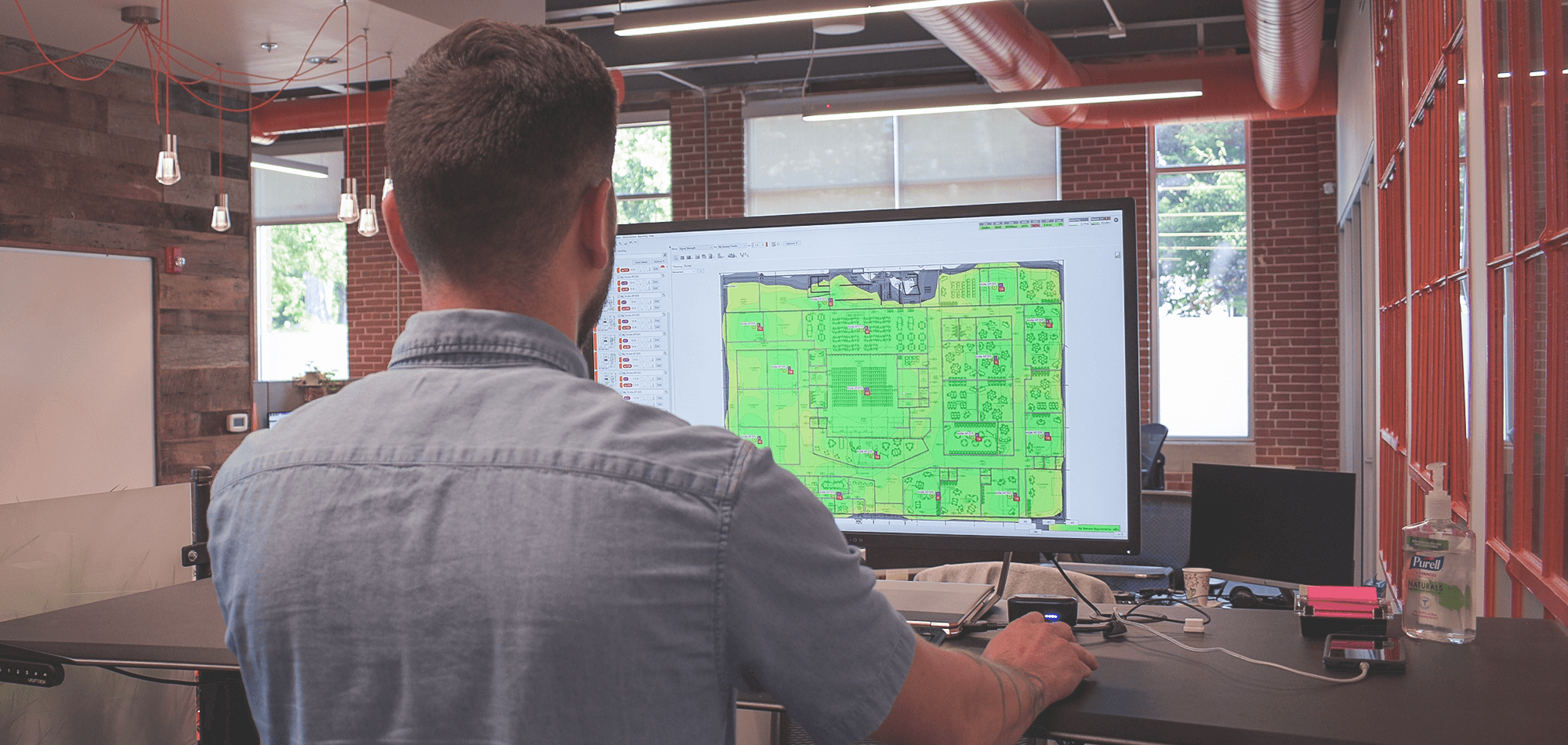
Are you planning a new wireless network for your company and wondering what your new WiFi network will cost? Or do you have an existing WiFi network that’s either too slow, too unreliable, or not secure?
If you’re feeling a little overwhelmed by the whole process and have no idea where to start, you’re not alone.
In a digital-first world, so much of your company’s success depends on its ability to adopt the technology it needs to compete. When so many of your end users are connecting to your WiFi with their smartphones, tablets, or laptops, you don’t want to have all of your business applications running on top of slow, flimsy, clunky wireless network infrastructure.
But unless you’re a pro at researching and buying a wireless network, you may not even know the right questions to ask. And the technology changes so quickly; what you knew a year or two ago may not even be relevant.
Plus, as enterprise wireless has evolved, being an IT or computer networking generalist won’t cut it. Way too much is on the line.
And of course, no company can afford to write a blank check for their WiFi -- either initially or on an ongoing basis.
So what’s the right answer for your situation? How do you figure out how much your new WiFi network is going to cost?
To get a price now, visit our online network subscription pricing tool.
In this blog post, you’ll learn about WiFi planning, how the WiFi design process works, and budgeting for your new WiFi network.
WiFi Planning
Before you get too far ahead of yourself, first start by figuring out what goes into sound WiFi planning best practices. And just as important, be sure to remember that researching and purchasing an enterprise-class WiFi network is very different than installing an access point in your home.
What should you be thinking about to set you up for success with your new wireless network?
Ask about each of these seven areas to make sure that your WiFi quote is truly comprehensive:
-
Radio frequency (RF) planning and design -- Unlike traditional computer networks that use twisted pair and fiber optic cable, WiFi networks run on radio frequency. Because RF is invisible to the naked eye, be sure the company you’re considering is knowledgeable about predictive RF design, wireless site surveys, wireless network engineering, performance assessments, performance monitoring, and systems management.
-
Coverage vs. capacity -- Your WiFi planning should also take into account the effectiveness of your wireless coverage and how that approach to managed WiFi will address your end users’ capacity needs -- both now and at least in their intermediate future, over the next 24 to 36 months.
-
Access points -- Think about a big city with major intersections and traffic lights, and how they keep traffic flowing smoothly without too many incidents. With this analogy, you start to approximate the importance of access points. But how many APs do you need? What kind of related hardware is required? And where should all of this be installed to make sure that your WiFi is as fast, reliable, and secure as you need it to be?
-
Network infrastructure -- Yes, access points are basic WiFi building blocks. But your APs are pretty close to worthless without robust network infrastructure underneath. Controllers, switches, firewalls, and power should all be addressed in the same kind of conversation.
-
Scalability -- Your company may have 50 end users in a location. And each has two devices. How will your WiFi scale if you grow to 150 end users in the same location, add 30 daily guest users, and each user now brings three devices? Good question, right?
-
Security -- Is the Internet getting any safer with each passing month? Hardly. And there’s a good reason why cybersecurity experts command such high starting salaries. They’re in short supply, and the training is time-consuming and expensive. If your IT team doesn’t have advanced WiFi security expertise, you’d better find someone that does within the scope of your managed WiFI agreement.
-
System management -- Moves. Adds. Changes. Onboarding new users. If any of these make you look like somewhere in between a deer in headlights and breaking out in a cold sweat, be sure to factor your system management needs into your overall WiFi budget.
How the WiFi Design Process Works
So now that you know about seven key areas that factor into WiFi planning, what else should you know to get the right quote for your new WiFi network?
To sniff out the generalist VARs, consultants, and managed service providers (MSPs) from the real experts in enterprise WiFi, be sure you have a good handle on what WiFi design best practices looks like:
- What does your company need? -- This sounds simple enough. But you’d be shocked at how often unqualified network integrators prescribe before the patient even has a chance to describe their symptoms.
- Proper RF capacity and coverage for your devices and applications -- Again this sounds simple but is very often skipped because of ignorance or laziness.
- Environment -- For example, a hospital has very different WiFi usage patterns and needs than a shopping mall.
- Unique Business Goals -- Yes, certain kinds of buildings, campuses, and industries have certain kinds of patterns. But at the end of the day, every wireless network is different. Different goals, different challenges, and different expectations. All of these impact your WiFi budget.
- Who you work with -- While there’s no substitute for the experience of installing hundreds of wireless networks, at the minimum be sure that the company you’re entrusting invests in manufacturer training and certification, wireless design software and certification, and wireless industry training and certification. If you see a lack of third-party certifications, a lot of entry-level employees, or a team that’s mostly independent contractors, you’re jeopardizing the entire technology backbone that your company needs to achieve its goals.
Budgeting for Your New WiFi Network
You’ve learned about seven areas to make sure that your WiFi budget quote is comprehensive. You’ve been introduced to an additional handful of WiFi design process considerations that drive costs, to help you steer clear on unqualified wireless generalists that lack advanced, enterprise WFi expertise.
Finally, make sure you understand the necessary steps that an enterprise WiFi expert like SecurEdge Networks uses to help you plan your WiFi budget and what goes into those variables driving WiFi network costs:
-
Your industry -- Is your company best described as consulting, enterprise, government, healthcare, higher education, hospitality, K-12 education, warehousing, not for profit, retail, technology, or other?
-
The size of your coverage area -- Is your location less than 10,000 square feet, between 10,000 and 25,000 square feet, 25,000 to 50,000 square feet, 50,000 to 75,000 square feet, 75,000 to 100,000 square feet, or more than 100,000 square feet?
-
The number of WiFi users -- How many daily users does your WiFi network have? Less than 500, between 500 and 1,000 users, between 1,000 and 2,500 users, between 2,500 and 5,000 users, between 5,000 and 10,000 users, between 10,000 and 25,000 users, or more than 25,000 users?
-
Your deployment timeframe -- Although this doesn’t impact how much your WiFi network will cost, knowing your timeline and lead time helps both parties stay organized and on top of interim steps needed for a successful, on-time wireless network installation.
The Bottom Line on Managed WiFi and How Much a New WiFi Network Costs
If your company is like most, your company now sees its WiFi network as mission-critical -- just as essential as a utility like electricity or running water. Realistically how long could your business function without its wireless network?
If you answered not very long, then it’s crucial that you take your research and purchasing decision very seriously when it comes to making the right choice for your next refresh or new deployment.






